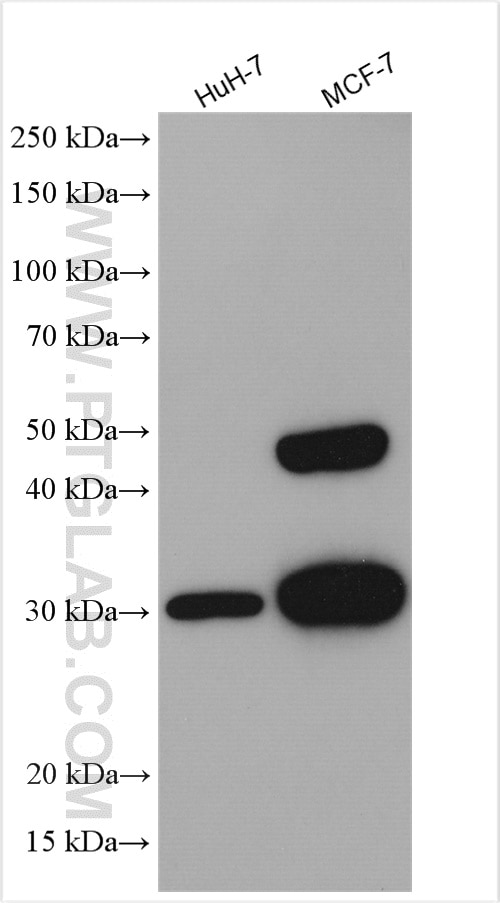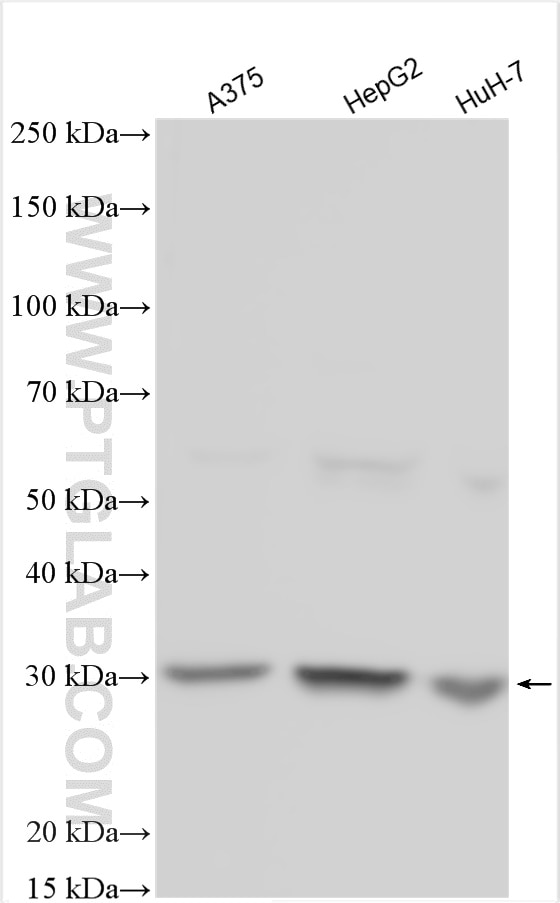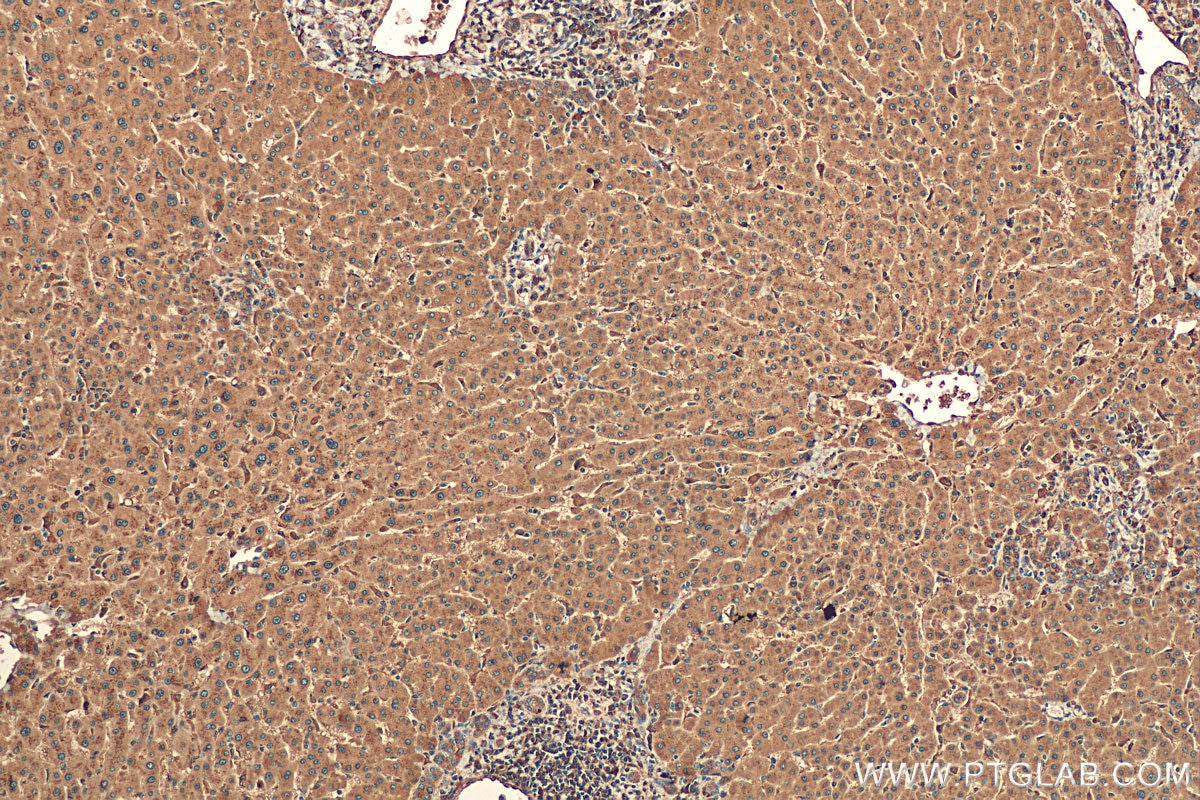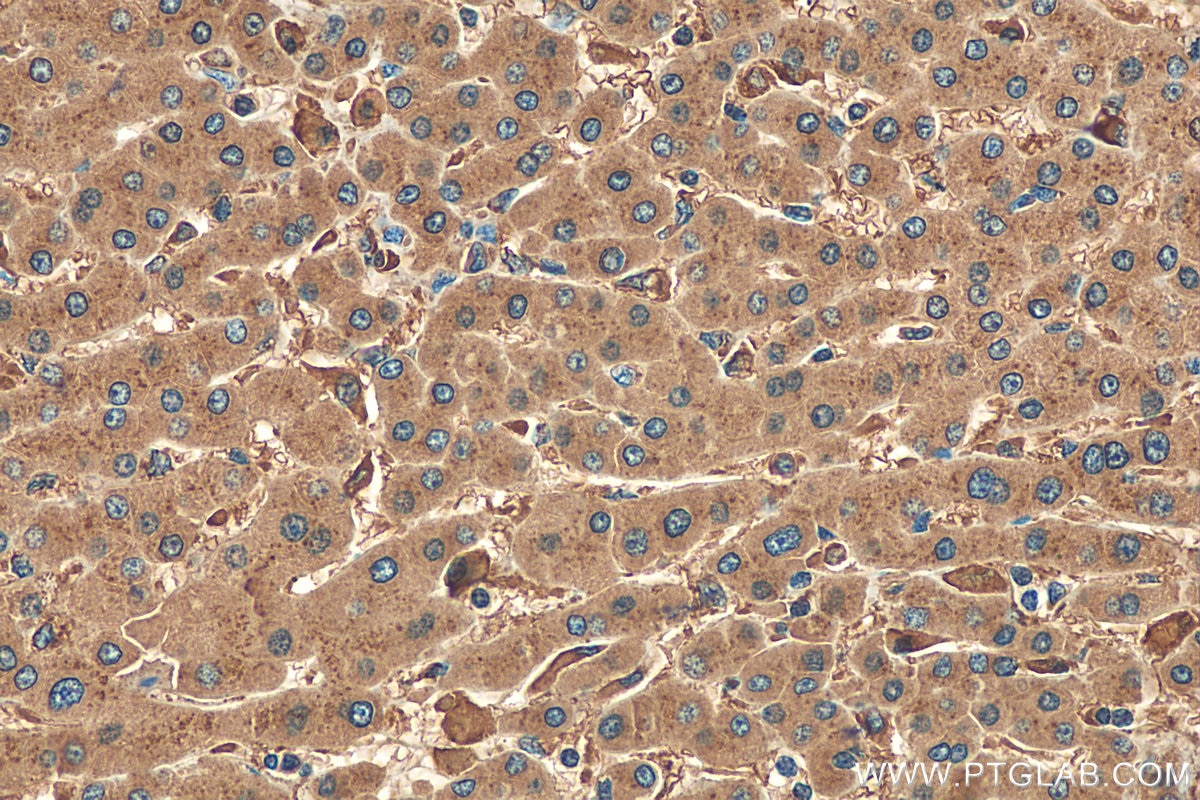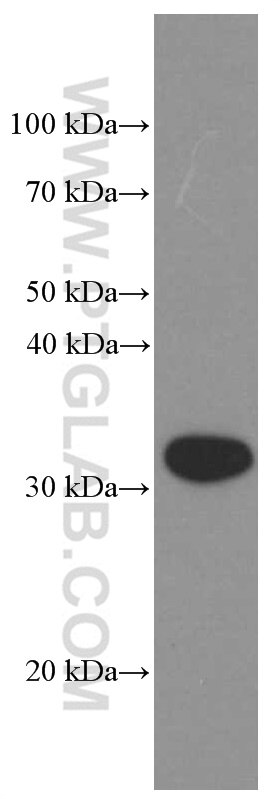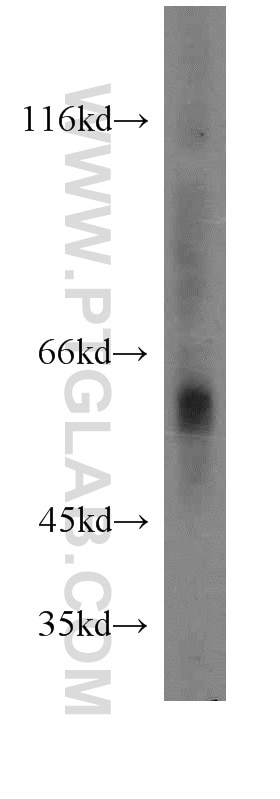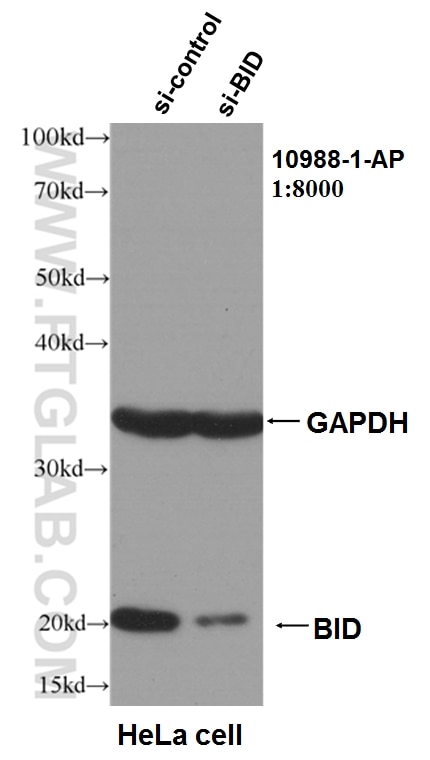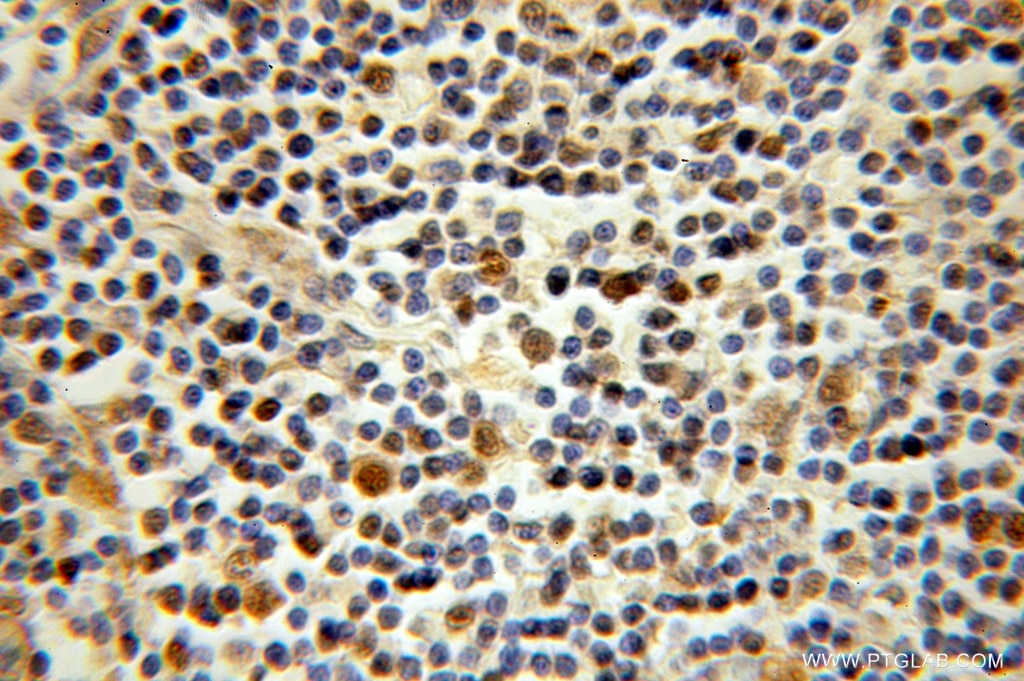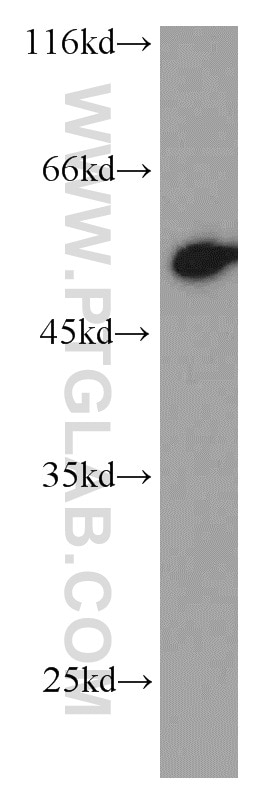- Featured Product
- KD/KO Validated
Cathepsin D Polyklonaler Antikörper
Cathepsin D Polyklonal Antikörper für IHC, WB, ELISA
Wirt / Isotyp
Kaninchen / IgG
Getestete Reaktivität
human, Maus, Ratte und mehr (2)
Anwendung
WB, IHC, IF, ELISA
Konjugation
Unkonjugiert
Kat-Nr. : 21327-1-AP
Synonyme
Galerie der Validierungsdaten
Geprüfte Anwendungen
| Erfolgreiche Detektion in WB | A375-Zellen, HepG2-Zellen, HuH-7-Zellen, MCF-7-Zellen |
| Erfolgreiche Detektion in IHC | humanes Leberzirrhosegewebe Hinweis: Antigendemaskierung mit TE-Puffer pH 9,0 empfohlen. (*) Wahlweise kann die Antigendemaskierung auch mit Citratpuffer pH 6,0 erfolgen. |
Empfohlene Verdünnung
| Anwendung | Verdünnung |
|---|---|
| Western Blot (WB) | WB : 1:5000-1:50000 |
| Immunhistochemie (IHC) | IHC : 1:500-1:2000 |
| It is recommended that this reagent should be titrated in each testing system to obtain optimal results. | |
| Sample-dependent, check data in validation data gallery | |
Veröffentlichte Anwendungen
| KD/KO | See 1 publications below |
| WB | See 86 publications below |
| IHC | See 13 publications below |
| IF | See 12 publications below |
Produktinformation
21327-1-AP bindet in WB, IHC, IF, ELISA Cathepsin D und zeigt Reaktivität mit human, Maus, Ratten
| Getestete Reaktivität | human, Maus, Ratte |
| In Publikationen genannte Reaktivität | human, Hausschwein, Maus, Ratte, Rind |
| Wirt / Isotyp | Kaninchen / IgG |
| Klonalität | Polyklonal |
| Typ | Antikörper |
| Immunogen | Cathepsin D fusion protein Ag15254 |
| Vollständiger Name | cathepsin D |
| Berechnetes Molekulargewicht | 412 aa, 45 kDa |
| Beobachtetes Molekulargewicht | 32 kDa, 48 kDa, 52 kDa |
| GenBank-Zugangsnummer | BC016320 |
| Gene symbol | CTSD |
| Gene ID (NCBI) | 1509 |
| Konjugation | Unkonjugiert |
| Form | Liquid |
| Reinigungsmethode | Antigen-Affinitätsreinigung |
| Lagerungspuffer | PBS mit 0.02% Natriumazid und 50% Glycerin pH 7.3. |
| Lagerungsbedingungen | Bei -20°C lagern. Nach dem Versand ein Jahr lang stabil Aliquotieren ist bei -20oC Lagerung nicht notwendig. 20ul Größen enthalten 0,1% BSA. |
Hintergrundinformationen
CTSD (Cathepsin D) also named CPSD, belongs to the peptidase A1 family. It is ubiquitously expressed and is involved in proteolytic degradation, cell invasion, and apoptosis. Human CTSD is synthesized as a 52-kDa precursor that is converted into an active 48-kDa single-chain intermediate in the endosomes, and then into a fully active mature form, composed of a 34-kDa heavy chain and a 14-kDa light chain, in the lysosomes. It is a lysosomal acid protease found in neutrophils and monocytes and involved in the pathogenesis of several diseases such as breast cancer and possibly Alzheimer disease. (PMID: 27114232, PMID: 30717773, PMID: 30051532)
Protokolle
| Produktspezifische Protokolle | |
|---|---|
| WB protocol for Cathepsin D antibody 21327-1-AP | Protokoll herunterladen |
| IHC protocol for Cathepsin D antibody 21327-1-AP | Protokoll herunterladen |
| Standard-Protokolle | |
|---|---|
| Klicken Sie hier, um unsere Standardprotokolle anzuzeigen |
Publikationen
| Species | Application | Title |
|---|---|---|
Acta Pharm Sin B Nuciferine protects against high-fat diet-induced hepatic steatosis and insulin resistance via activating TFEB-mediated autophagy-lysosomal pathway. | ||
Redox Biol Cyclic helix B peptide alleviates proinflammatory cell death and improves functional recovery after traumatic spinal cord injury | ||
Autophagy Restoration of CTSD (cathepsin D) and lysosomal function in stroke is neuroprotective.
| ||
Cell Death Differ Programmed cell death 4 modulates lysosomal function by inhibiting TFEB translation. |
Rezensionen
The reviews below have been submitted by verified Proteintech customers who received an incentive forproviding their feedback.
FH Chen (Verified Customer) (06-01-2021) | Very good to detect cathepsin D in postmortem human samples with Western blotting
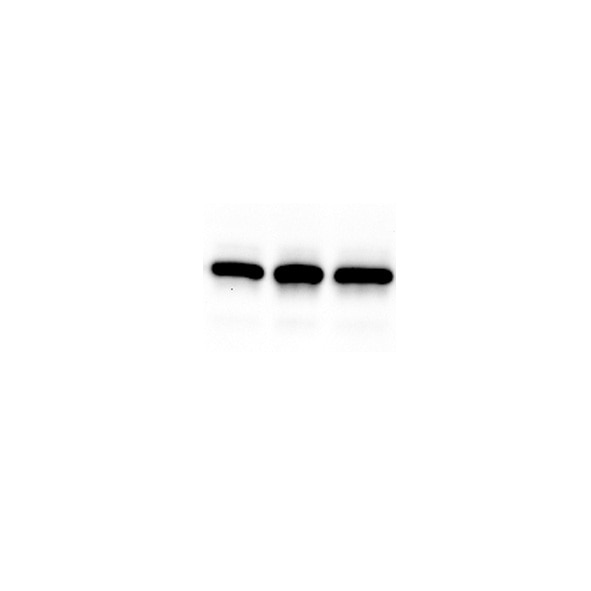 |
FH Efil (Verified Customer) (05-29-2019) | cells were fixed in cold MeOH for 8 minutes
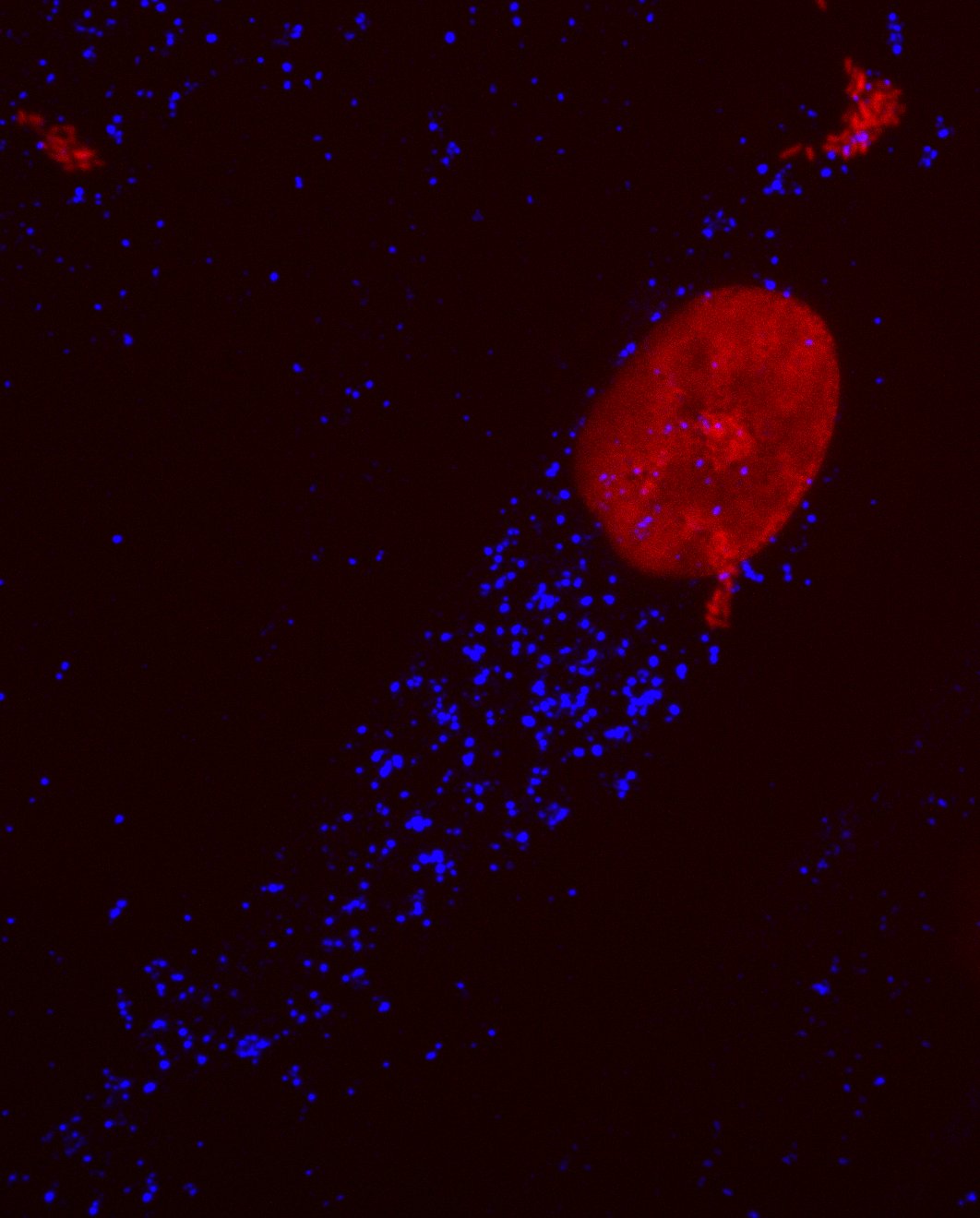 |
